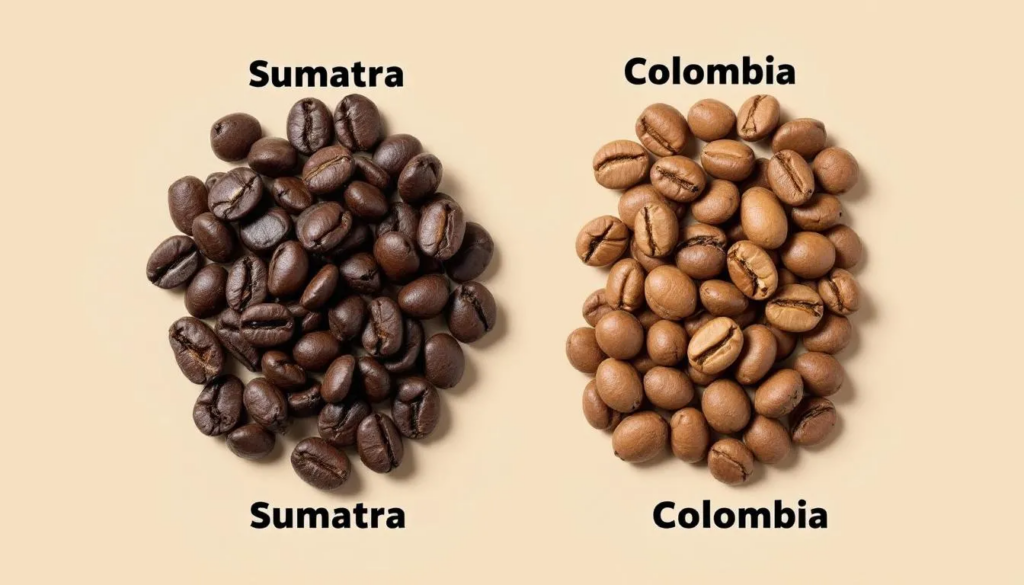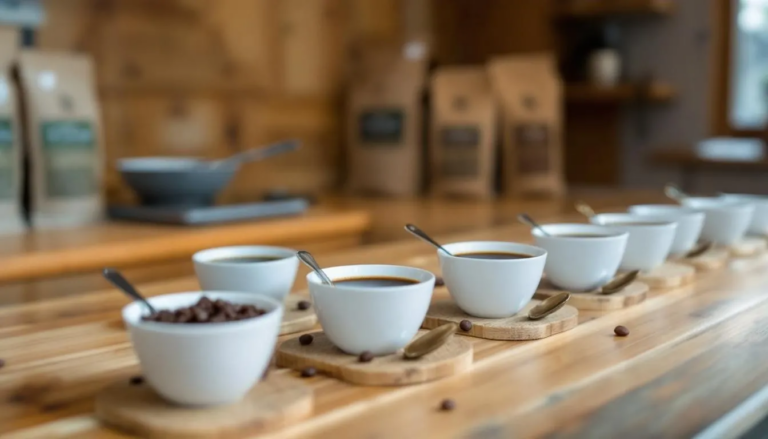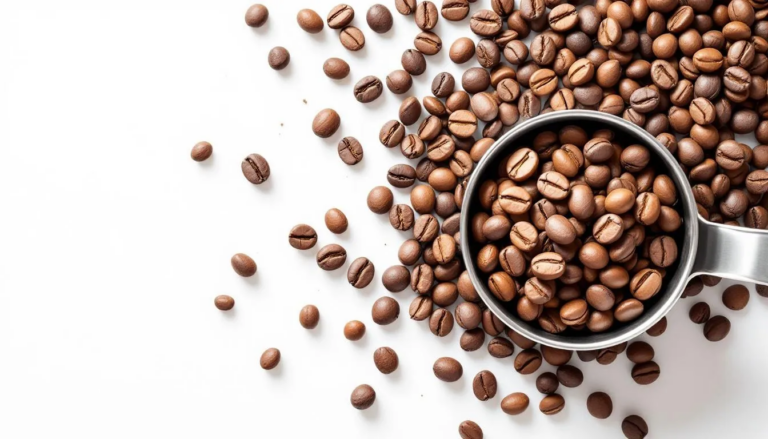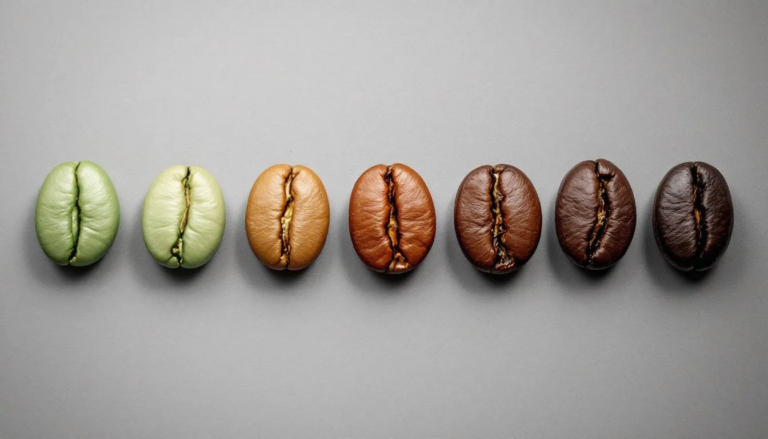When coffee enthusiasts debate single origin excellence, two names consistently dominate the conversation: Sumatra and Colombian coffee. These powerhouse origins represent opposite ends of the flavor spectrum, each offering distinct characteristics that have captivated coffee lovers around the world for generations.
Both Sumatra and Colombia boast a rich history in coffee cultivation, with longstanding traditions and cultural significance that have shaped their unique contributions to the global coffee industry.
Understanding the differences between these celebrated coffee beans goes beyond simple preference. The choice between Sumatra’s earthy intensity and Colombian coffee’s balanced brightness reflects fundamental differences in geography, processing methods, and agricultural traditions that shape every cup of coffee you brew.
Choose Your Perfect Coffee Experience
The sumatra vs colombian coffee debate centers on dramatically different coffee flavours that appeal to distinct palate preferences. Sumatra coffee delivers earthy, full bodied complexity with remarkably low acidity, creating a rich, syrupy body that coats your palate. Meanwhile, Colombian coffee offers balanced sweetness paired with bright, vibrant acidity that provides a clean, refreshing cup with medium body.
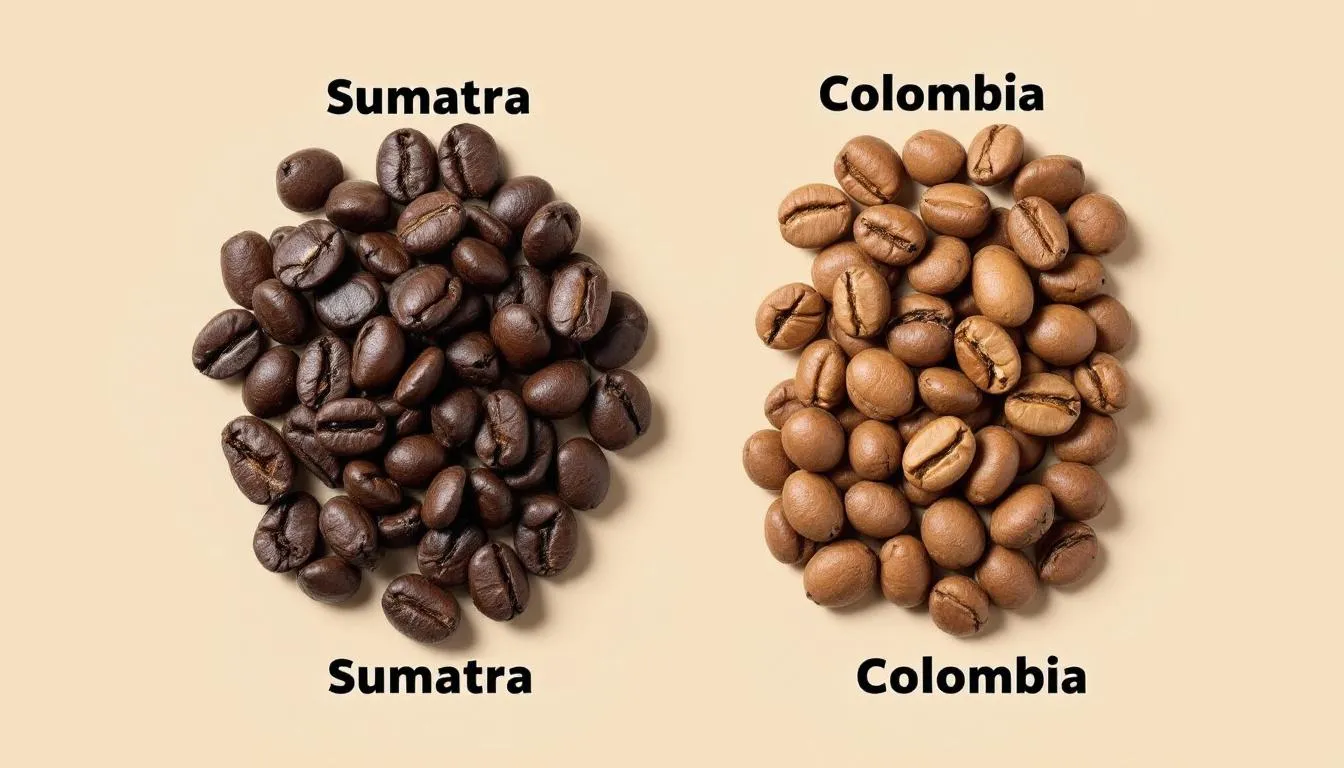
These contrasting characteristics stem from unique environmental conditions and processing methods that have evolved over centuries. Sumatra’s volcanic soil and distinctive wet hulling process create one of the most recognizable flavor profiles in specialty coffee, while Colombia’s high-altitude growing conditions and washed process preserve the natural sweetness and bright acidity that arabica beans are prized for.
Understanding these fundamental differences helps coffee enthusiasts select the ideal coffee bean for their taste preferences, brewing methods, and daily coffee rituals. Whether you’re drawn to bold, unconventional flavors or prefer balanced, versatile profiles, both origins provide distinct flavor journeys that have earned their places among the world’s most respected single origin coffees.
What Makes These Coffee Origins Unique?
Sumatra Coffee – Indonesian Volcanic Intensity
Sumatra coffee has been cultivated in Indonesia’s volcanic regions since 1884, primarily around Lake Toba where rich, mineral-laden volcanic soil creates ideal growing conditions for high quality coffee. This tropical climate and unique terroir contribute to the distinctive earthy flavors and complex flavor profile that defines indonesian coffees.
The most significant factor distinguishing Sumatra coffee lies in its unique wet hulling process, known locally as giling basah. This processing method removes the hull while coffee beans retain 25-35% moisture content, creating the signature characteristics that set sumatran coffees apart from other coffee producing countries.
During wet hulling, freshly picked coffee cherries undergo depulping and then ferment overnight. This overnight fermentation is crucial, as it helps develop the coffee’s earthy, low-acid flavor profile and contributes to the rich, complex taste and heavy mouthfeel characteristic of Sumatran coffees. Workers then remove residual mucilage by hand before hulling the still-moist beans, removing the parchment layer while significant moisture remains. This unconventional approach, vastly different from the washed process used in central america and south america, substantially impacts the final cup profile.
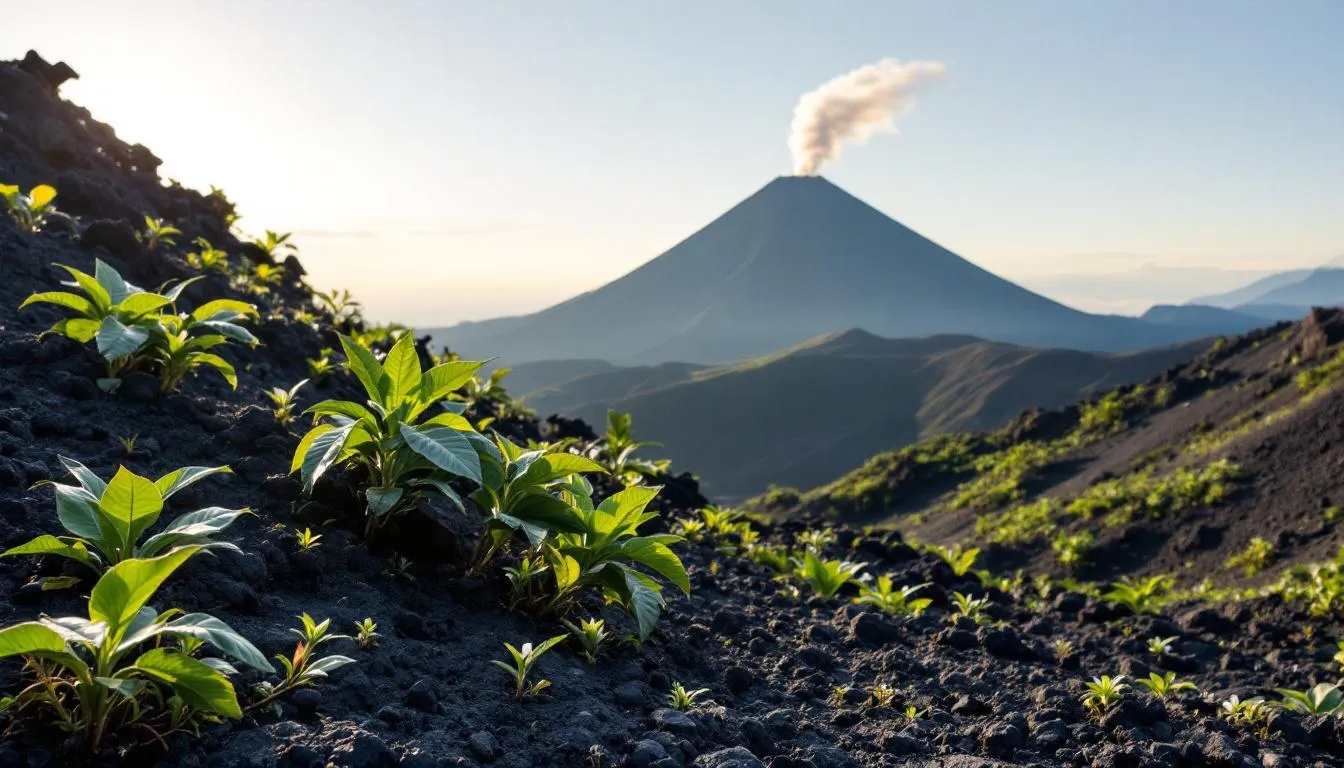
The wet hulling process creates sumatra coffee’s renowned low acidity and full body characteristics. By processing beans at higher moisture levels, the method fractures cell walls and allows microbial activity that develops earthy flavors, mushroom-like undertones, and the subtle notes of dark chocolate and spice that define high quality beans from this region.
Traditional varieties like Mandheling showcase lush body and deep intensity with notes of dark chocolate, tobacco, wood, and spice flavors. Gayo coffee from Aceh Highlands offers a contrasting experience with caramel-like sweetness and smooth, pleasant acidity while maintaining the distinctive characteristics that make sumatran coffees so distinctive.
Colombian Coffee – High-Altitude Balance
Colombian coffee boasts an even richer history, introduced by Jesuit priests in 1723 and cultivated across the country’s Andes mountain ranges. The exceptional growing conditions found at elevations between 1,200-2,000+ meters above sea level create ideal environments for arabica coffee production, promoting slow bean maturation and concentrated sweetness. The unique qualities of coffee grown in Colombia are shaped by these specific regions and altitudes, resulting in distinct flavor profiles that are highly prized worldwide.
Colombia’s diverse coffee growing regions—including Huila, Cauca, Nariño, and Sierra Nevada de Santa Marta—benefit from consistent tropical climate conditions with mild temperatures and abundant rainfall. These high-altitude environments allow coffee varieties to develop the bright acidity and complex flavors that colombian coffee offers to specialty coffee enthusiasts.
Nearly all Colombian coffee undergoes the washed process, which preserves the inherent qualities of the coffee bean by thoroughly removing fruit residue before drying. This processing method ensures consistent quality and allows the natural characteristics of different coffee varieties to shine through, creating the clean flavor profile that colombian coffees are celebrated for.
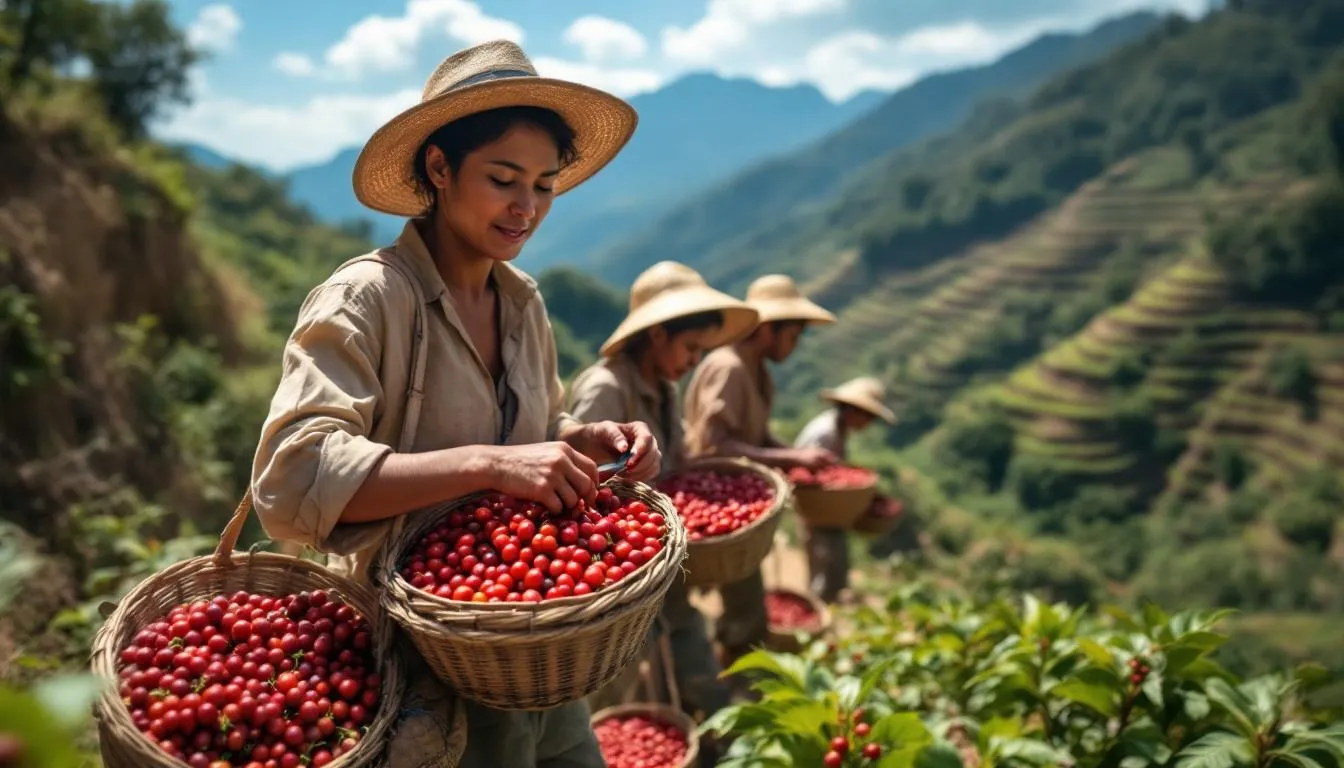
The washed process involves depulping ripe cherries, fermenting to loosen mucilage, and washing before sun-drying. This meticulous approach produces notably clean flavors that highlight the arabica beans’ natural sweetness, bright acidity, and aromatic complexity that varies beautifully between different regions.
Southern Colombian regions like Huila typically produce coffee with bright, complex cups featuring notes of caramel, citrus, and berry notes. Northern regions often yield heavier-bodied coffees with rounder flavor profiles, but overall, colombian beans maintain the dynamic brightness, well-balanced medium body, and layered palette of flavors including cocoa, brown sugar, caramel, red fruit, and subtle spice notes that make them perfect for various brewing methods.
Understanding Coffee Bean Types
Coffee beans are the heart and soul of every cup of coffee, and for coffee lovers seeking the perfect brew, understanding the different types of coffee beans is essential. The world of coffee is rich with variety, but most specialty coffees are crafted from two main species: Arabica beans and Robusta beans. Each brings its own unique characteristics to the cup, shaping the flavor profile, aroma, and overall experience.
Arabica beans are celebrated for their high quality and complex flavors, often delivering a sweet taste with vibrant acidity and subtle notes ranging from fruity and floral to chocolate and caramel. Colombian coffee, renowned for its balanced flavor and bright acidity, is a prime example of what Arabica beans can offer. These beans thrive in high-altitude regions with rich volcanic soil, which imparts unique flavors and contributes to the outstanding cup quality that Colombian coffees are known for.
Robusta beans, on the other hand, are typically bolder and more bitter, with a robust taste and higher caffeine content. While they may lack the nuanced flavors of Arabica, Robusta beans are valued in espresso blends for their ability to create a rich crema and add depth to the cup. Many espresso blends combine both Arabica and Robusta beans to achieve a harmonious balance of strength and complexity.
Specialty coffee is a term reserved for high quality coffee beans that have been meticulously grown, harvested, and processed to highlight their unique flavors. These coffees often come from dedicated producers in coffee growing regions such as Colombia, Brazil, Ethiopia, and Indonesia. Brazilian coffee, for instance, is known for its mild flavor and low acidity, making it a favorite for those who enjoy a smoother, more approachable cup. Brazil’s large-scale coffee production ensures a steady supply of consistent quality beans, but many coffee enthusiasts seek out smaller, specialty lots for their distinct flavor profiles.
Sumatra coffee stands out for its earthy flavors and low acidity, a result of the island’s unique wet hulling process and mineral-rich volcanic soil. This combination creates full bodied coffees with complex flavors that are prized by coffee enthusiasts around the world. In contrast, Costa Rican coffee is famous for its bright acidity and fruity flavor, offering a lighter, more refreshing cup that highlights the region’s commitment to high quality coffee production.
The flavor profile of any coffee is influenced by a variety of factors, including the type of coffee bean, the processing methods used, and the roast level. Processing methods like the washed process help preserve the delicate, fruity and floral notes of the coffee, while unique techniques such as Sumatra’s wet hulling bring out earthy and spicy notes. Roast level also plays a crucial role: lighter roasts tend to emphasize the bean’s natural acidity and subtle flavors, while darker roasts develop more robust, chocolatey, and caramelized notes.
Around the world, coffee producing countries offer a dazzling array of coffees, each with their own unique characteristics. From the full bodied, earthy coffees of Indonesia to the bright, berry-laden cups of Kenyan coffees, the global coffee market is a playground for those eager to explore different flavors and styles. Whether you’re drawn to the sweet taste and floral notes of high altitude Arabica, the rich flavors of Brazilian coffee, or the complex flavor of a specialty espresso blend, there’s a world of options to discover.
Ultimately, understanding the different types of coffee beans and the factors that influence their flavor empowers you to make informed choices and find the perfect cup to suit your taste. Whether you’re a seasoned coffee enthusiast or just beginning your journey, exploring the diverse world of coffee beans is the key to unlocking new and exciting coffee experiences.
Sumatra vs Colombian Coffee: Flavor Profile Comparison
Processing Methods Impact
The fundamental difference between sumatra vs colombian coffee lies in their contrasting processing methods, which create dramatically different sensory experiences. Sumatra’s wet hulling technique processes beans while they retain significant moisture, fundamentally altering the cellular structure and creating opportunities for unique microbial activity that develops the signature earthy flavors and robust taste. Each processing method gives the coffee its own flavor profile, shaped by how the beans are handled and the resulting chemical changes.
| Processing Aspect | Sumatra (Wet Hulling) | Colombian (Washed) |
|---|---|---|
| Moisture Content | 25-35% during hulling | Fully dried before hulling |
| Fermentation | Loose overnight fermentation | Controlled mucilage fermentation |
| Body Development | Creates syrupy body | Preserves natural body |
| Acidity Impact | Suppresses acidity | Preserves bright acidity |
| Flavor Development | Enhances earthy, savory notes | Highlights fruit and sweetness |
Colombian coffee’s washed process takes the opposite approach, thoroughly removing fruit residue and fermenting in controlled conditions before complete drying. This method preserves the bean’s natural characteristics, allowing the inherent sweetness, fruity and floral notes, and bright acidity to remain prominent in the final cup.
The wet hulling process creates sumatra coffee’s distinctive “wild” complexity by allowing extended contact between beans and organic matter during the moisture-retention phase. This produces the muted fruit notes and accentuates non-fruit undertones like earth, mushroom, and wood that experienced coffee drinkers often describe as reminiscent of forest floor, dark cocoa, and exotic spice flavors.
Acidity Levels
Acidity represents one of the most significant differences when comparing these origins. Sumatra coffee features remarkably low acidity, making it gentler on sensitive stomachs and appealing to coffee lovers who prefer bold, grounding flavors without the brightness that characterizes many specialty coffees.
The lower acidity in sumatra coffee results from the wet hulling process, which neutralizes many of the acids that would normally contribute to brightness. This creates a smooth, mellow drinking experience that emphasizes body and mouthfeel over the sharp, refreshing qualities found in washed coffees.
Colombian coffee, conversely, showcases medium to high bright acidity that provides a crisp, refreshing sensation at the front of the palate. This pleasant acidity balances beautifully with the natural sweetness and creates the lively, dynamic character that makes colombian beans versatile for multiple brewing applications. The bright acidity is often accompanied by a lighter body, which enhances the refreshing quality of the cup.
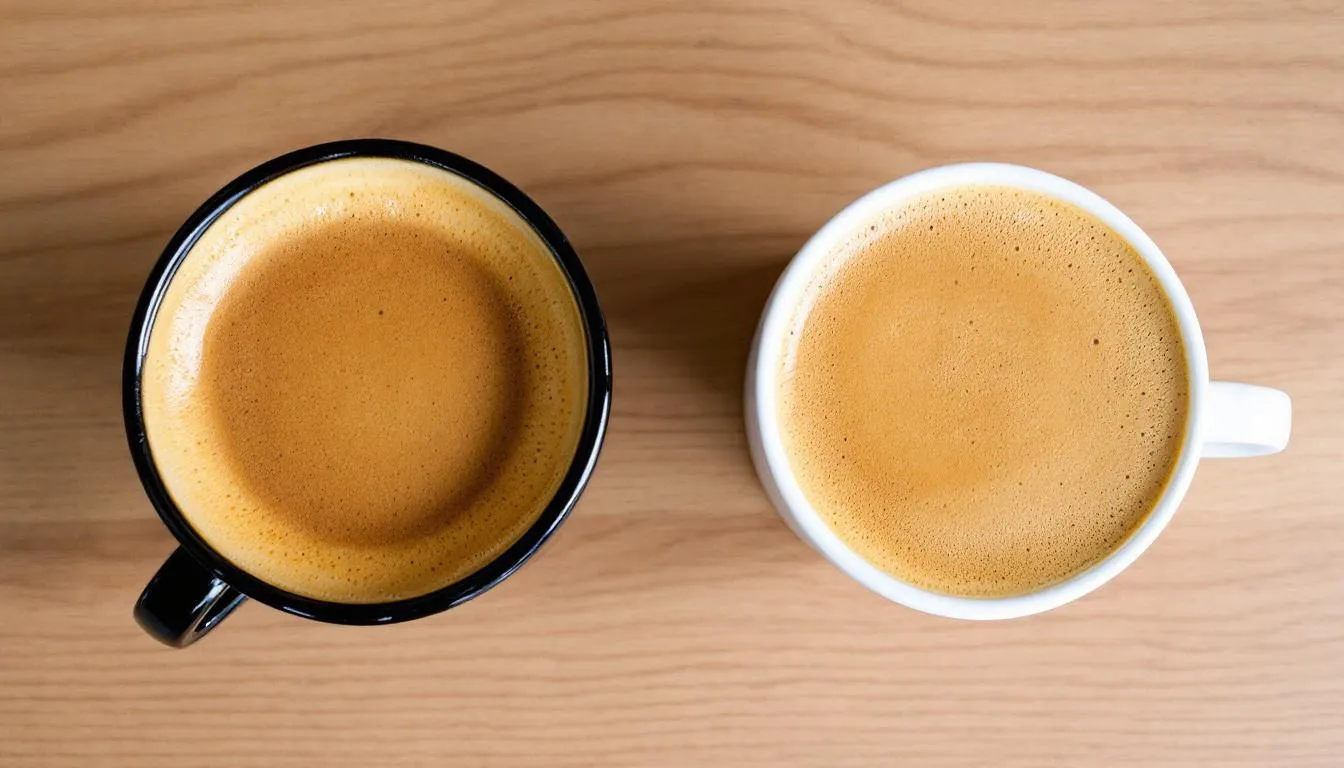
The bright acidity in colombian coffee enhances fruit flavors and creates the sparkling quality that specialty coffee enthusiasts prize. This acidity works in harmony with chocolate notes, caramel sweetness, and subtle spice to create a well-rounded, complex flavor experience that appeals to a broad range of palates.
Body and Texture
Body and texture differences between these origins are immediately apparent from the first sip. Sumatra coffee produces a full bodied, syrupy texture that creates a dense, mouth-coating sensation. This substantial mouthfeel lingers on the palate, providing a rich, almost viscous consistency that emphasizes the coffee’s intensity and depth. In contrast, some coffees are light bodied, offering a smooth, mild, and delicate experience with a bright, clean, and well-balanced profile.
The syrupy body in sumatra coffee comes from the wet hulling process, which breaks down cellular structures and creates compounds that contribute to the thick, creamy texture. This full body supports the earthy flavors and provides a substantial foundation that makes sumatra coffee particularly effective in espresso blends where backbone and intensity are desired.
Colombian coffee offers a contrasting medium body with smooth, well-rounded mouthfeel that never overwhelms the palate’s sensitivity to flavor nuances. This balanced texture allows the complex flavors—from fruity brightness to chocolate undertones—to express themselves clearly without the heavy coating sensation found in full bodied coffees.
The clean finish and balanced weight of colombian coffee make it exceptionally versatile for different brewing methods. Whether brewed as a french press, pour-over, or espresso, the medium body provides enough substance to support complex flavors while maintaining the clarity that allows subtle notes to shine through.
What Experienced Coffee Drinkers Say
Coffee enthusiasts and industry professionals consistently praise both origins for their distinctive qualities, though preferences often align with individual taste preferences and brewing habits. Both Sumatra and Colombian coffees are widely recognized as good coffee by experts and enthusiasts alike, thanks to their reputation for quality and unique regional attributes. Sumatra coffee appeals strongly to traditionalists and those seeking bold, unconventional flavor experiences that stand apart from mainstream coffee profiles.
Specialty coffee roasters frequently use sumatra coffee as a foundation for espresso blends, valuing its low acidity and full body for creating rich, mouth-coating shots that provide excellent crema and substantial mouthfeel. The earthy complexity and unique flavors add depth and character to blends while the substantial body helps balance brighter, more acidic components.
Coffee lovers who gravitate toward sumatra coffee often appreciate its consistency and distinctiveness. Unlike many origins that can vary significantly between lots or processing variations, well-processed sumatra coffee maintains its signature characteristics, providing a reliable flavor experience for those who enjoy its particular profile.
Colombian coffee attracts praise for its exceptional versatility and crowd-pleasing characteristics. Coffee professionals consistently rank colombian beans among the world’s benchmark origins due to their flavor consistency, superior growing conditions, and reliable quality control that makes them suitable for both specialty applications and everyday drinking.
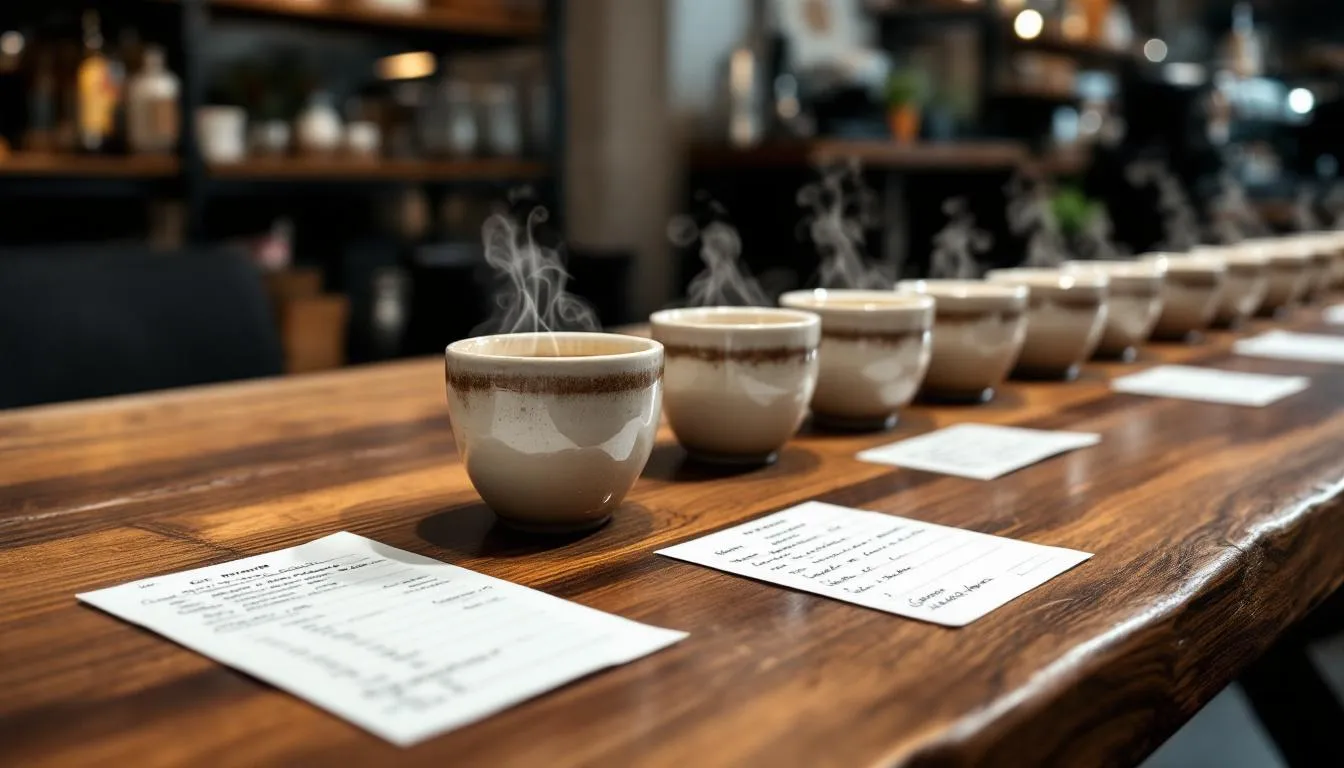
The balanced sweetness and bright acidity of colombian coffee make it an excellent introduction to specialty coffee for newcomers while providing enough complexity to satisfy experienced palates. Many coffee enthusiasts describe colombian coffee as their “daily driver” due to its pleasant characteristics and versatility across brewing methods.
Specialty coffee enthusiasts particularly value colombian coffee’s terroir expression, with different regions producing distinct flavor variations that showcase how altitude, soil composition, and microclimates influence taste. This regional diversity provides coffee lovers opportunities to explore subtle differences within the broader colombian coffee category.
Brewing Requirements Overview
The distinct characteristics of sumatra vs colombian coffee require different approaches to achieve optimal extraction and flavor development. Similarly, brazilian coffees, known for their clean, light, and brightly acidic qualities, also have unique brewing requirements and flavor profiles that set them apart from other origins. Understanding these brewing requirements helps coffee enthusiasts maximize the potential of each origin and avoid common preparation mistakes that can diminish the coffee quality.
Sumatra Coffee Brewing Methods
Sumatra coffee’s full body and low acidity make it particularly well-suited for brewing methods that emphasize texture and intensity. The french press method excels at extracting the syrupy body and earthy flavors while the longer extraction time allows the complex flavor compounds to fully develop.
The robust taste and substantial mouthfeel of sumatra coffee also make it excellent for espresso preparation, where the dense body creates rich crema and the low acidity provides smooth shots without harsh brightness. Many specialty coffee shops feature sumatra coffee in their espresso blends specifically for these qualities.
When brewing sumatra coffee, medium to dark roasts typically produce the best results. Darker roasts enhance the chocolate notes and spice flavors while further reducing any residual acidity. The roasting process develops the oils that contribute to the characteristic syrupy body and intensifies the earthy undertones that define this origin.
| Brewing Method | Grind Size | Water Temperature | Extraction Time | Best Results |
|---|---|---|---|---|
| French Press | Coarse | 195-205°F | 4-5 minutes | Full body, earthy complexity |
| Espresso | Fine | 190-196°F | 25-30 seconds | Rich crema, syrupy texture |
| Aeropress | Medium-fine | 185-195°F | 2-3 minutes | Clean intensity, reduced sediment |
Colombian Coffee Brewing Excellence
Colombian coffee’s balanced profile and bright acidity shine through brewing methods that highlight clarity and aromatic complexity. Pour-over methods like Chemex and V60 excel at preserving the fruity and floral notes while maintaining the clean finish that characterizes washed processing.
The versatile nature of colombian beans makes them suitable for virtually any brewing application, from automatic drip coffee makers to sophisticated manual brewing techniques. The medium body provides enough substance for immersion methods while the bright acidity creates excellent extraction in percolation brewing.
Light to medium roasts optimize colombian coffee’s natural characteristics, preserving the sweet taste and bright acidity that distinguish this origin. Lighter roasts particularly highlight the fruity flavor components and caramel sweetness while maintaining the chocolate notes that provide depth and balance.
Cold brew preparation works exceptionally well with colombian coffee, as the extended extraction time develops sweetness while the cold water minimizes bitter compounds. The result showcases the natural fruit flavors and creates a refreshing beverage that maintains complexity without overwhelming acidity.
Which Coffee Origin is Right for You?
Choosing between sumatra vs colombian coffee ultimately depends on your flavor preferences, brewing habits, and desired coffee experience. Each origin offers distinct advantages that appeal to different aspects of coffee appreciation and daily consumption patterns.
Choose Sumatra Coffee if you want:
Bold, unconventional flavor experiences that stand apart from typical coffee profiles. Sumatra’s earthy complexity and unique flavors provide adventurous coffee drinkers with distinctive cups that showcase how processing methods can dramatically influence taste.
Low acidity coffee that’s gentle on sensitive stomachs while still providing rich, satisfying flavor. The reduced acidity makes sumatra coffee an excellent choice for people who find bright, acidic coffees uncomfortable or overwhelming.
Full bodied, substantial mouthfeel that creates a rich, coating sensation and emphasizes texture as much as flavor. The syrupy body provides a luxurious drinking experience that appeals to those who appreciate substantial, dense coffee.
Unique wet hulling characteristics that create one-of-a-kind flavor profiles unavailable from other coffee producing countries. The distinctive processing method produces flavors that coffee enthusiasts often describe as “funky” or “wild” in the best possible way.
Excellent espresso potential for home brewing or blending applications where body and low acidity create smooth, rich shots with substantial crema and lingering finish.
Choose Colombian Coffee if you want:
Balanced sweetness with vibrant character that provides complexity without overwhelming any single flavor component. Colombian coffee’s harmony between sweetness, acidity, and body creates universally appealing cups.
Versatile brewing applications that perform excellently across multiple preparation methods from french press to pour-over to espresso. This flexibility makes colombian beans an excellent choice for households with diverse brewing preferences.
Clean, well-rounded flavor profiles with chocolate and caramel notes that provide familiar, comforting flavors enhanced by bright fruit undertones. The washed process creates clarity that allows subtle flavors to express themselves clearly.
Consistent quality from established coffee growing regions with rigorous quality control and sustainable farming practices. Colombian coffee’s reliability makes it an excellent choice for daily consumption and coffee subscriptions.
Gateway to specialty coffee exploration, as colombian beans provide complexity and quality while maintaining approachable flavors that help develop palate appreciation for single origin coffees.
The decision between these exceptional origins often comes down to whether you prefer the bold, earthy intensity of sumatra coffee or the balanced, bright character of colombian coffee. Many coffee enthusiasts find value in keeping both origins in their rotation, using sumatra for rich, contemplative morning cups and colombian coffee for afternoon brewing or entertaining guests.
Consider starting with smaller quantities of each origin to experience their distinctive characteristics firsthand. Most coffee becomes more enjoyable when you understand the agricultural heritage, processing techniques, and geographical factors that contribute to each cup’s unique personality.
Your perfect cup depends on understanding these fundamental differences and matching them to your personal preferences, brewing equipment, and coffee consumption habits. Both origins represent pinnacles of coffee production excellence, each offering pathways to deeper appreciation of how geography, tradition, and craftsmanship create the diverse world of specialty coffee that enriches daily life for coffee lovers everywhere.
